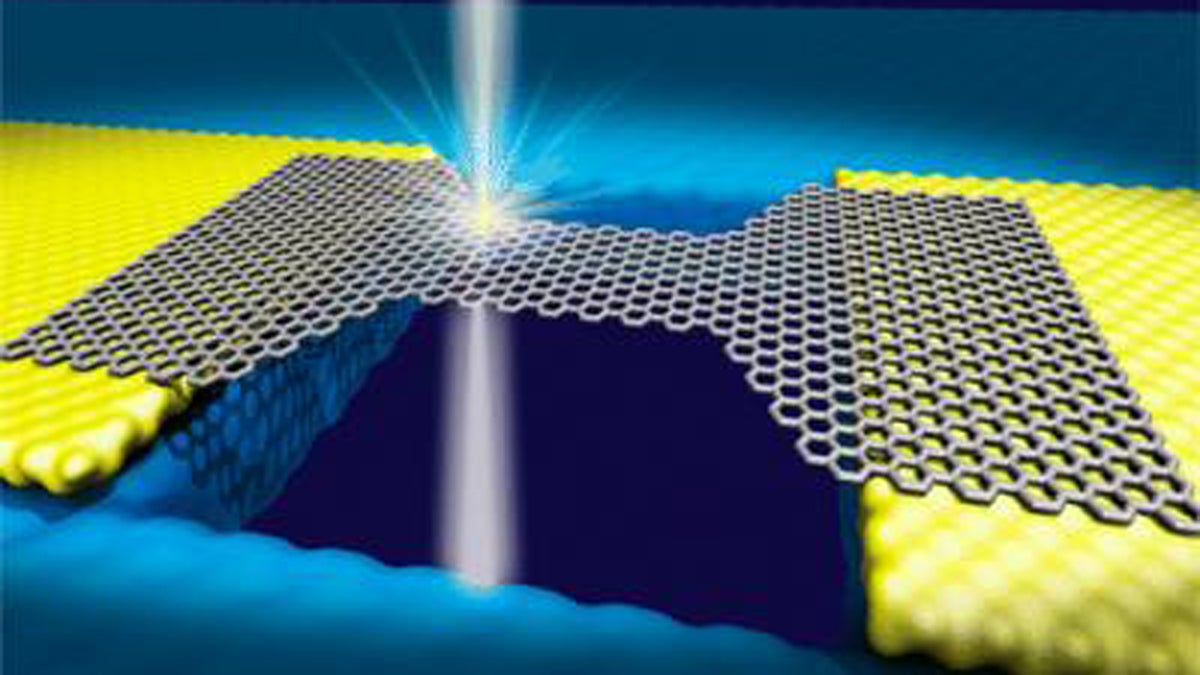Penn physicists probe atomic structure of graphene, computing’s next silicon
Listen
An illustration of a graphene nanoribbon shaped by the beam of a transmission electron microscope. (Image courtesy of Robert Johnson)
For the first time, scientists at the University of Pennsylvania have been able to measure the performance of graphene while visualizing its atomic structure.
The material is deceptively simple; it’s composed entirely of a single element, carbon. But at one-atom thick, it’s extremely thin, and that flatness produces unusual and highly desirable properties.
“It’s very, very strong mechanically, and it is an excellent electronic material that might be used in future computer chips,” said Charlie Johnson, a professor of physics and astronomy at the University of Pennsylvania and an author of the recent study.
Understanding the fundamental physics of the material is key to its future application in electronics. For its part, the Penn team used a transmission electron microscope to cut small ribbons of the material from a larger sheet. Then they tested how slight alterations in geometry from those cuts changed the graphene’s ability to conduct electricity.
Often, Johnson said, the graphene ribbons would fold over and form stable dual-layer structures.
“When we get two layers that bond together, these ‘bilayers,’ they carry electrical current amazingly well,” he said.
Publishing in the journal Nano Letters, the group found that for such ribbons — just five atoms wide — each atom could handle approximately one microampere of current.
In isolation, that amount is small. But Johnson said one microampere per atom is about a thousand times larger than any currently used material.
“It’s an amazingly robust little conductor,” he added.
Graphene has yet to be used in circuits, but co-author Marija Drndic said the material holds a lot of potential.
“The whole idea of graphene and other 2-D materials that are now being studied is really to have much better performance than the standard silicon that we’re used to, and also being able to realize circuits at a much smaller scale,” she said.
Future graphene transistors, Johnson said, are likely to be only tens of atoms across.
Also attractive because it’s flexible, graphene may offer a way for innovators to create foldable smartphones or other wearable devices.
WHYY is your source for fact-based, in-depth journalism and information. As a nonprofit organization, we rely on financial support from readers like you. Please give today.

